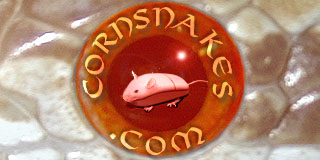Taking dogs for example "AKC registration means that the parent dogs were registered, that an irresponsible breeder lied or was mistaken about the breeding that produced the litter, or that an unprincipled breeder was commiting outright fraud to raise the value of the puppies. Registration itself is neither a guarantee nor even an indication of quality. No one examines the parent dogs or the puppies to see if they really qualify for registration, and AKC depends on breeders to be honest when applying for a litter registration. Some unethical breeders apply for registration forms for puppies that have died or were never born, and they then use these certificates on puppies of doubtful parentage.
THis is very true, ANY registry depends on a breeders honesty (I wasn't meaning to imply that people weren't being honest I hope that wasn't how it came across)
Cocker SPaniels is the breed that I was most involved in. In cockers, in the last 20 years, the merle gene has popped up, and has been traced back to one dog. There is a HUGE debate in the cocker community about merle as it's nto a cocker spaniel color, however the AKC continues to register merle animals (often as roan) because there has been more than five generations since the origonal dog and no way to go back and find out if the dog in question is actually the dog it was supposed to be. Most people believe that it was a sheltie, and was either purposely or accidentally introduced into the lines (such as you mentioned having more than one sire in a litter as a possability)
Several breeders proved that with a sheltie outcross within THREE generations you could have true cocker type, and even if the occasional "throwback" did appear they resemble the "Old type" cockers enough to still be considered cockers (especially to those not highly familiar with the breed)
However, from the AKC's stance, they are now as "purebred" as any other cocker spaniel due to the generations of breeding since then and the inability to actually verify the parentage of the dog in question.
Again, the burden of proof lies with those that believe the merle to be a result of an outcross to a different breed, proof, that as of yet no one has been able to produce, therefore the AKC continues to register those dogs as purebred.
the same thing with these tessara's the burden of proof lies with those that doubt it's parentage.
At least witht he merles in cockers there are pedigree's available and people were able to trace the gene to it's origin (or supposed origin) The cornsnake registry isn't quite at that point yet (now, a few years from now, might be a different story, especially if people are diligent about registering their animals)
Corns are also complicated by the fact that you can catch them in the wild, that of course is something that dogs don't contend with

I can see both sides in the debate, one that there is interpretation open to those that belive there is a possability they could be hybrids, and to those that are in the camp that it's just another wild genetic mutation. There are arguments on both sides to support both points of view and I doubt there will ever be any resolution to the debate.
